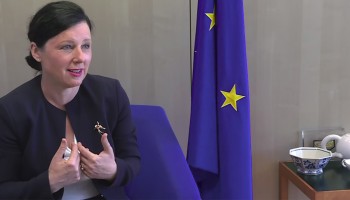Caruana Galizia was killed by a car bomb outside her home on October 16, 2017. Three men have been accused of detonating the bomb but police say their motive still remains unknown, according to Reuters. These men are not thought to be the masterminds behind the assassination.
After a mass, people carried candles and flowers through the streets Valletta to a memorial dedicated to Caruana Galizia.
Other vigils were held around Europe in her memory. A US$1.2 million reward has been offered by the Maltese government for information on the murder.
PEN International also released a letter signed by leading writers and journalists calling for authorities to hasten their investigation and to drop the numerous libel cases against her and now her family. Prime Minister Joseph Muscat, they say, keeps insisting they be tried.
Caruana Galizia was a prominent investigative reporter who contributed to the Panama Papers investigation and was a staunch critic of corruption in the country. Her blog openly called out Maltese underworld figures and public officials alike for alleged crimes and misdeeds.
“This murder is the outcome of the Maltese government's inaction and silent complicity. It is a private tragedy for one family, but it is also a public tragedy about how the people’s stolen wealth is routed through the heart of Europe. These crimes have victims and Daphne is one,” Paul Radu, executive director of OCCRP, said in a statement after Caruana Galizia’s death.
OCCRP and other organizations have continued her work with The Daphne Project, spearheaded by Forbidden Stories, a Paris-based organization established specifically to continue the work of killed, imprisoned, or otherwise incapacitated journalists.
The project consists of 45 journalists representing 18 news organizations from 15 countries who picked up the work after her death.






